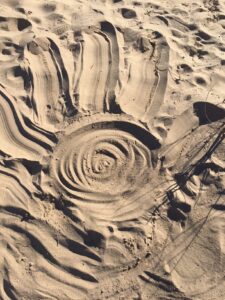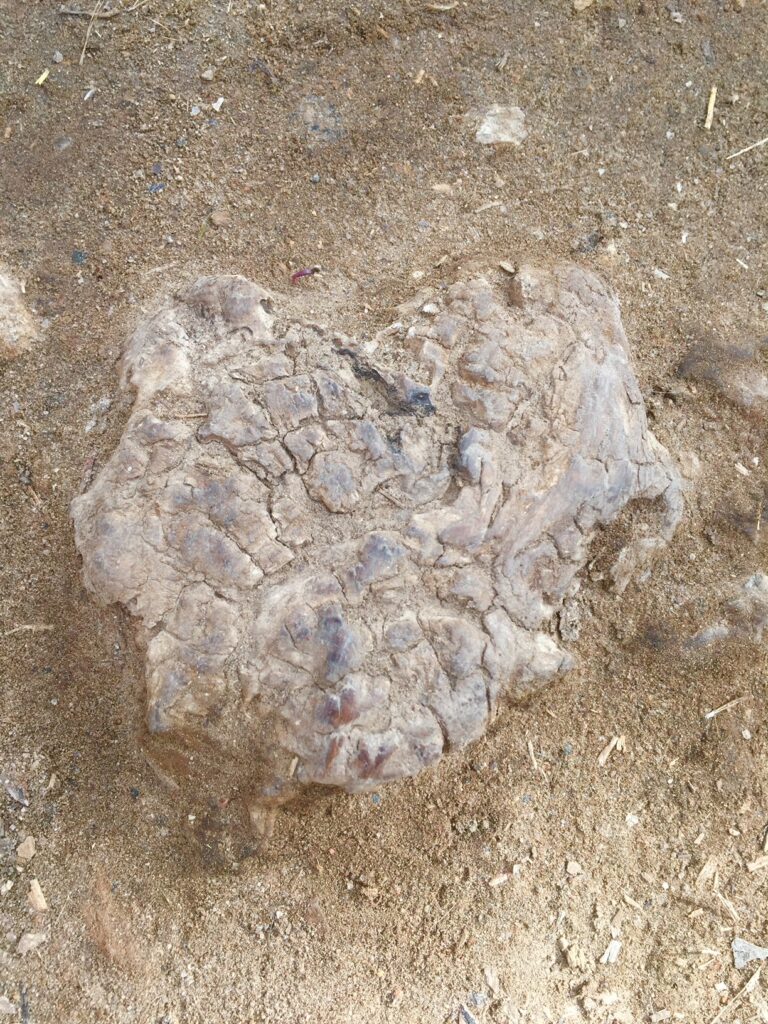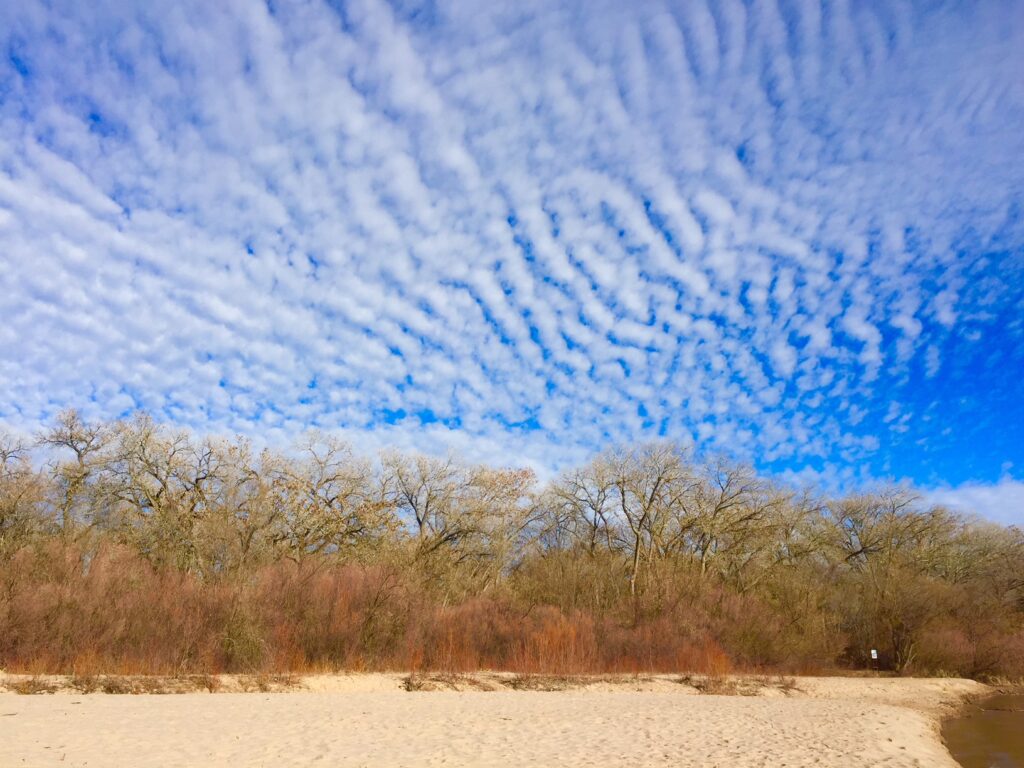bosque birthday
“I know, it’s loud,” I agreed into the phone. “I’m taking the bus to the river.”
My son had called to wish me a happy birthday; I could hardly hear him, and he could hardly hear me.
“I wanted to be lazy and have coffee this morning, and also walk along the river, so I’m taking the bus to save time,” I explained. I did not elaborate that I planned to walk a new stretch of trail that was unfamiliar, and I didn’t know how long it might take, so I was taking the bus now hoping to avoid walking home in the dark.
I got off at the Rio Grande stop. “Sorry, I know, still loud,” I continued. I had walked several blocks beside heavy traffic and wasn’t quite to the river yet. Then I saw what I was looking for. “Ah. I thought Rio Grande would be the stop by the river. But it’s not; that’s Rio Grande Avenue. There’s one coming up now – Bio Park. Apparently this one is for the river.” I crossed the final street with the WALK light; a small truck nearly turned into me. I threw out my hands and yelled, “Hey!” The driver appeared completely unaffected, barely slowing, as if he was bored with my outburst.
This happens often here in Albuquerque. Now that I’ve lived here over nine months, I’m getting better at simply walking defensively, expecting the cars that blow through red lights, turn without stopping or even glancing over, drive in the bus lanes, the bike lanes, pass in the parking lanes. It’s always very loud walking here. Albuquerque’s is a car culture, restored classics, lowriders with tiny rims, muscle cars without mufflers. People gun their engines and ride their horns when driving under the train bridge; I often hold my ears as I cross through that tunnel.
I’m still trying to get used to Albuquerque. Let’s be honest, to New Mexico. I love the landscape, but I’m struggling with some aspects of the culture. Like aggressive dogs barking and snarling from behind fences and walls. Bars on the doors and windows of nearly every home, always locked. Yet every gathering revolves around homemade food full of cheese and fat and love; I so hate cooking, I’d rather eat peanut butter with a spoon than have to learn to make delicious tamales. I want to walk and talk together, unguarded, not cook and eat together.
“I’ve made it to the river,” I told my son. He praised my accomplishment and told me to enjoy the rest of my day. I hung up and put the phone in my pocket. Then, hitching my pack straight, I took the dirt trail to the left.
I started to search for hearts. A friend of a friend collects them, photos of heart-shaped anything, tiny messages from the universe. In my younger years, I collected hearts too – one of those incongruous details you might have learned back then about my contradictory personality, if you successfully ran the gauntlet of my emotional defenses. Few know that I, too, am a heart-spotter.
Settling into the rhythm of my footsteps on the path, eyes scanning the rocks and trees for symbolism, my thoughts returned to another birthday call, this one from my daughter. A passing comment had caught my ear, and now caught my mind: so many people seem to feel the need to have opinions about things they don’t know, haven’t experienced. I knew this rebuke included me; I wasn’t sure if my daughter realized it also included her. At points in some of our recent conversations, I could hardly hear her, and she could hardly hear me.
I remember when I was a teenager, my best friend interrupted some loud, long-winded tirade of mine to interject, “God – you…are…so…opinionated, you just have…an opinion…on…everything….”
I can still see her down-turned face, one hand on her exasperated hip, the other hand passing across her closed eyes, then waving that hand to indicate “everything,” her empty arm held extended, slowly shaking her head at the floor between us.
It utterly stopped me – in that moment. It did not stop me over a lifetime.
The thing is, my friend had opinions, too; often she just didn’t voice them, or she hid them as punchlines to jokes. She later told me she thought I was popular and had lots of friends; not true. She thought I was competitive; I am not. She judged my relationships, sometimes making small derisive comments; my relationships clearly failed, but her jokes did not help. She didn’t understand my perspective, or my experience.
My friend has a kind, generous heart. And yet, she sees the world through her lens, and so that lens casts me in the particular filtered light that makes sense to her. We all do this. Sharing homemade tamales is a lens, as is taking the bus and walking, or greeting my neighborhood through the prison bars of self-protection. What my daughter was wondering sounded to me like, “How can we stop being so opinionated?” 
Stop knowing.
Sometimes we can, and sometimes, it seems like we can’t.
I stopped and leaned against an old cottonwood tree, pulled my water bottle from my pack, and took a long drink of water. I looked around, then took another slow drink.
Along the Rio Grande, cottonwoods and willows form dense, cool buffers on either side of the river. This is the Bosque. The Woods. According to “Beauty of the Bosque” by Ruth A. Smith in American Forests, the cottonwoods of the Rio Grande “have been growing in the bosque for more than a million years….” Anyone who has lived around wild, unmanaged cottonwood trees knows that in spring they release their seeds, fluffy with cotton that lifts them into the West’s winds like a snow squall, sometimes for days – until an actual spring rain or snow drench the cotton, dropping the now-heavy wet seeds and sticking them in place on the muddy clay soils of the region.
More than a million years. And now there’s a problem.
It started in the 1950s, when the U.S. Army Corps of Engineers was tasked with managing the Rio Grande’s seasonal ebb and flow, controlling its flood plain by eliminating its flooding. The prevailing opinion was that rivers should be harnessed for industrial and community development.
But a bosque needs flooding. Cottonwood trees need inundation to flourish; they need the river to flood, creating mud flats in which their seeds can sprout and grow. Flood was part of the culture of the Rio Grande ecosystem. But it hadn’t been discussed, so it hadn’t been understood. Now the old cottonwoods, known as “the heart of the bosque,” were dying. And no new seedlings were germinating and taking root to take their place.
Putting the lid on my water bottle, I stowed it back in my pack. My eye fell on a dead cottonwood leaf at my feet, dried to the exact dusty tan of the clay soil of the trail. Cottonwood leaves are heart-shaped.
“Cottonwood leaves don’t count,” I’d been told of the heart scavenger hunt for the friend of a friend. “She’s already got cottonwood leaves.”
I lifted my gaze from the trail. And I saw the dying bosque, dried dead leaves covering every inch of the forest floor. Hundreds of thousands of millions of leaves – hearts everywhere, fallen hearts, broken hearts, trampled hearts, faded hearts.
I saw that opinions are hearts. Because opinions are beliefs. Each heart thinks it knows, believes what it knows, through the lens of its culture and environment. But if those beliefs and experiences are not articulated, not offered, not requested, or not shared, they cannot be understood. Life and growth cannot be nourished without understanding.
If they’re not shared, cottonwood leaves don’t count. None of ’em. Sharing and beginning to understand – that’s the messy flood, where new beliefs, new hearts, can grow.
I’ve been doing this all wrong, I thought. Walking down Coal or Lead, over the train tracks, turning right at the river, coming back up Central Avenue. So loud. Always so loud. By the time I get home from my walk, my walk has turned to dust along the busy streets, and I don’t gain the solace of the river and the bosque.
Opinion, I thought wryly. Experience, I answered myself. I like this left hand turn instead. It’s quieter.
I followed the trail, away from the paved bike lanes, under the canopy of dying branches, walking among the quiet of old leaves, hearts strewn along the way as if asking me to remember their stories. I saw a small side path that opened wider through a vertical wall of red willow canes. I stepped through onto sand, a beach-like sand bar reaching far into the slow water.
A couple with a dog played directly in front of me; the dog was off leash. Without hesitation, I picked up an old, twisted cottonwood branch, a walking stick about as thick as my arm, and walked far to the left, to a quiet area screened by more red willows. The dog started to run my way. I stood with the stick, and it turned back immediately to its people.
When the dog had not returned after a few minutes, I settled, sitting and eating an apple from my pack. The sand was thick and soft, the same dusty tan color as the clay and the dried cottonwood leaves. Above the bosque, an army of small white clouds covered the sky, mimicking the leaves covering the ground below. Traffic double-crossed each other over a distant bridge, the roar just a low humming rumble. Leaning back on my pack, I could block the view of the bridge with one bent knee, the other leaned into it like two cottonwood trees. I pulled my hat down low over my eyes, the sun shining off the river. Ducks flew over in a whisper of quick wings. Geese called vaguely to each other from much farther upstream. I grew comfortable and sleepy.
After 20 minutes or so, I heard a gentle voice from down where the people had been playing with their dog. Sitting up, I saw a different dog scampering through the sand, heading for the water’s edge – and me. I immediately stood with the stick. The dog made an easy arc and turned toward me. A young man came jogging through the soft sand after the dog, calling softly to it, and to me, saying, “She’s really friendly. Don’t worry, she’s friendly.” Meanwhile, the dog had reached my sandy nest, and I kept turning, keeping the branch between us. The dog did not seem aggressive, but did not stop trying to reach me. She seemed more curious than anything.
The man called her over to him, and she went readily. “You know,” I called back to him, “people always say that. They always say their dog is really friendly.” He continued to pet the dog, but looked up, focused and listening. “And that’s not always the case. People don’t think to ask me what my experience of dogs has been.”
He looked at me with the same gentle kindness he had shown the dog. “What has your experience been with dogs?”
“Being chased, menaced. Having my kids chased. A dog lunged at my toddler in the stroller – he was at the dog’s face level, you know? Having a pit bull – not the dog’s fault, but it was a pit bull – run up, silently, at me from behind while I had my baby in a backpack, so that I had to keep whirling around to keep it in front of me.” I had picked up my pack while I talked, pulling my jacket back on.
“Those experiences sound scary.” He patted the dog, rubbing her sides.
“Yeah.” I watched him pet the dog. The dog laid down, relaxed. “So some people’s dogs are friendly. But some people raise them to be aggressive, you know?”
He smiled. “She’s a puppy still. I’m trying to teach her, we can’t run up and greet every friend we see. I like to bring her here, let her run, let her be off her leash for a little bit. But she still gets a little excited.”
I cocked my head, watching her. “I know they have those dog parks, but they seem like places the dogs get way too excited.”
“That seems like where they do get aggressive sometimes,” he agreed. “I think some people, that’s the only time they take their dogs out at all. I try to get her out here a couple times a week, up in the mountains once a week, but….”
I nodded. “It seems like you’re doing a great job of training her. Those light eyes – is she part husky?”
“Part husky, part coyote, part shepherd. She likes it in the wild.”
“Yeah, she must like it in the wild,” I agreed, my own light eyes shining. “I do too.”
The dog whimpered quietly once, and the man stood up from where he’d been crouching over her. “But you were having a moment here, in the quiet, and we interrupted,” he added. “We’re going to head along the trail. Thanks for sharing your experience. It’s helpful to hear, and to remember.”
“Thanks for listening, and talking,” I replied, smiling at his dog, and then at him.
They wandered away happily, over the sand and into the woods.
I stood, looking out over the quiet river. In my opinion, an excellent birthday.
This sand bar was a flood zone. That’s what made it so soft, the flooding, unprotected, the friction of resistance giving way. It’s what we need to flourish. It’s what our hearts need, to be flooded, with feelings and then with understanding. After all, it’s the full, green leaves that feed the trees; it’s our hearts, shaped by our beliefs and our experiences, that feed our lives. What shape my heart takes is up to me.

knot on a cottonwood root in the Bosque Trail, size of my curled hand, which is the size of my actual heart
